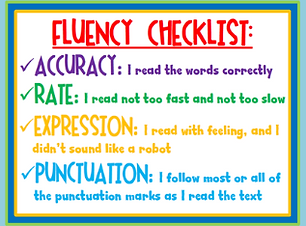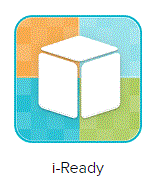
Proud
Educator
All things Reading.
From websites to apps, and research to doing, you will find all things reading related here.
When there is a link to an article or websites, just click on the picture
to follow the link directly to the website.

20 Minutes per day
A student that reads, or is read to, is exposed to 1.8 million words per year.
A students that only reads 5 minutes per day at home, is exposed to 282,000 words per year.
A student that reads only a minute or less per day is only exposed to 8,000 words per year.
This makes for difficulties in learning with regards to vocabulary, communication and reading comprehension.
Please make sure they reading a little every day.

Choosing a book
Every heard of the five finger rule? This is the method you can use with you student in order to find that "just right" book for them.
1. Open to any page of the book.
2. Listen to your student read aloud.
3. For every error your students makes (names are not included), put up one finger.
If at the end of the page they have:
0-1 finger up, the book is too easy.
2-3 fingers up, the book is just right.
4-5 fingers up, the book is too difficult.
It's that easy!

Goal Setting
We set goals at school for about everything. Teachers and students both. We all have things we want to accomplish and it doesn't happen over night. Hears what we with students.
"SMART"
S: specific. Your goal should tell you where you want to go or be.
M: Measure. Your goal should be measurable.
A: Attainable. Your goals should be achievable for you. They should push you to do your best.
R: Realistic. Is your goal and the time frame you set for yourself realistic?
T: Time. This helps you to be accountable for your hard work.

the "Big 5"
There are five major components to reading and each one builds on another.
1. Phonemic Awareness. Someone best described this to me by telling me that it is the sounds you hear in works if you were to turn the lights off and not be able to read them.
2. Phonics. This is the sounds that each letter or letter combinations can make when you are fist learning to read.
3. Vocabulary. This is understanding the words you are reading.
4. Fluency. This is many things (see next box), however, overall it is how you sound when you read.
5. Comprehension. Understanding what you are reading.

Fluency
Fluency is how you sound when you read. There are many elements that get put together that make you a fluent reader.
1. Accuracy. This is reading words correctly. This means choosing a book that is just right for you (names don't count).
2. Rate. This can be measured by how many words you read accurately in a certain amount of time.
3. Expression. This includes phrases and intonation--or how your voice can go up and down--such as when you are talking.
4. Punctuation. This means pausing at commas and periods, becoming excited when you see exclamation points, or raising your voice at the end when asking a question.

Vocabulary
When students get stuck and don't know how to read a word, we teach them strategies.
1. Reread the sentence or paragraph and listen for clues.
2. Look at the pictures for clues.
3. Use know word parts. Break the word into pieces.
4. Make a connection. Think about all the words and knowledge you have about the topic --are there any words that might look similar from your existing knowledge?
5. Substitute. If you think you know another word that might make sense, replace the unknown word with what you think fits and read it again to see if it makes sense.
i-Ready.com
i-Ready is an "interactive online learning environment designed to assess students and provide individualized instruction based on each one's unique needs. -i-Ready.com
Audience: All K-8
Price: ALL TSD Students have access
Once you student completes the online diagnostic, you student is automatically assigned lessons to meet them where they are.
The i-Ready reading covers phonics, vocabulary, comprehension and close reading.
IXL.com
"From phonics and reading comprehension to writing strategies and more, IXL helps learners develop the communication skills needed for success in school, college, and career." -IXL
Audience: ALL
Price: ALL TES students have access
Check for free trial if you student does not have an account.
IXL Language arts covers 14 different skills, which include grammar. Although we do teach grammar in school, we don't have a lot of time to work on parts of speech and such. This is GREAT practice for those skills we touch on but don't get a lot of practice in.
ReadWorks.Com
The nonprofit ReadWorks partners with K-12 teachers across the country to solve our nation’s literacy crisis.ReadWorks does this by bridging the gap between research and practice in reading comprehension instruction. -ReadWorks
Audience: ALL
Price: TES student have access through their teachers.
Students get assigned reading texts from their teachers. There are tools for highlighting and note taking, and comprehension questions to check their understanding.
Raz-Kids
"Raz-Kids is an award-winning teaching product that provides comprehensive leveled reading resources for students. With hundreds of eBooks offered at 29 different levels of reading difficulty, it's easy to put the right content in every student's hands."-Raz-Kids
Audience: K-8
Price: Select TES students have access
Check for free trial if you student does not have an account.
A LOT of high-interest fiction and non-fiction reading for students reading at different levels. Quizzes follow where students earn coins and buy supplies for their rocket.
ABC Mouse
"From phonics and reading comprehension to writing strategies and more, IXL helps learners develop the communication skills needed for success in school, college, and career." -IXL
Audience: Ages 2-8
Price: $65/ year
30 day free trial.
I can not express how happy other parents and I have been with all our own personal children have learned and enjoyed being on ABC Mouse over the years! Well worth it!.
Khan Academy
Students practice at their own pace, first filling in gaps in their understanding and then accelerating their learning.-Khan
Audience: ALL
Price: TES student have access through their teachers
Although mostly for math, Khan also has classes in Social-Emotional Learning for ages 2-7, Reading for each grade level (beta), Arts & Humanities and history.




